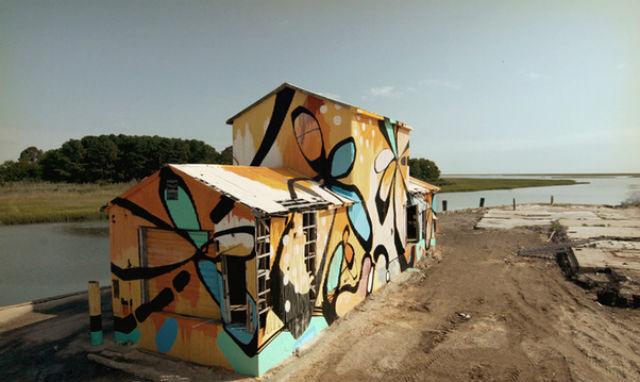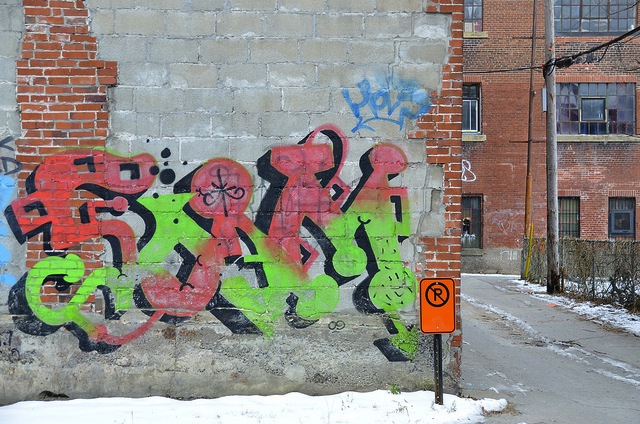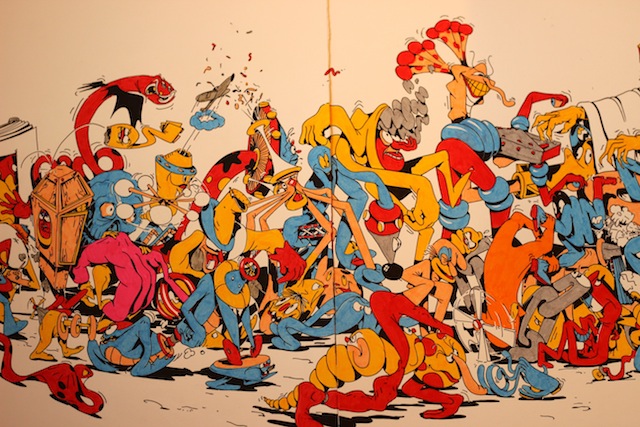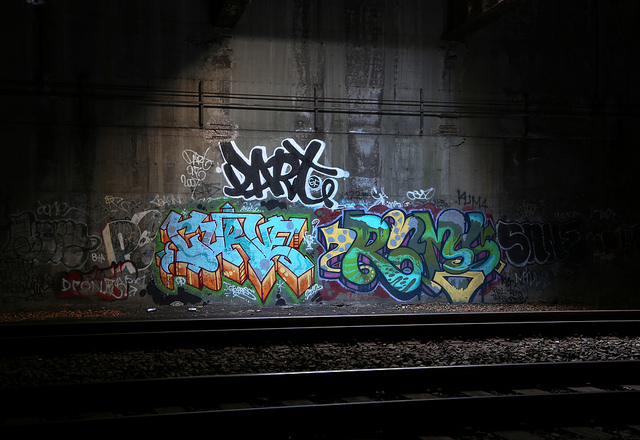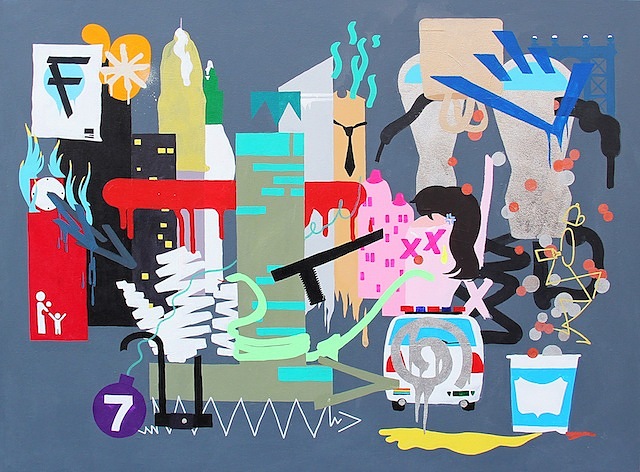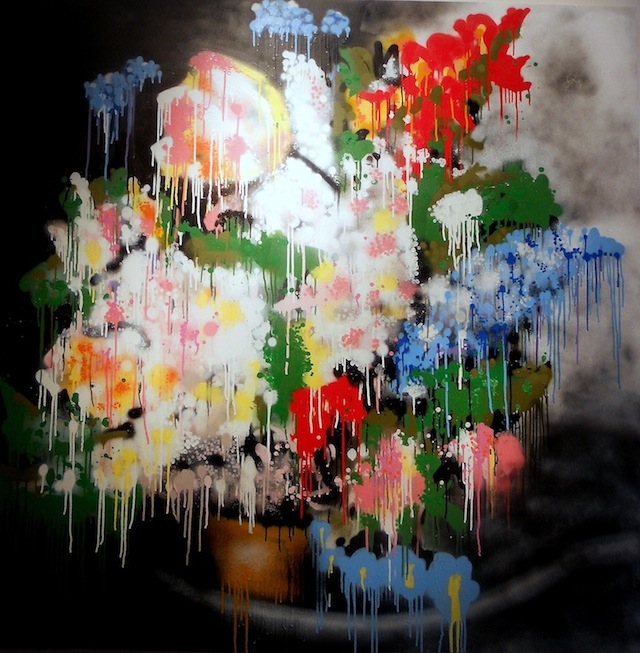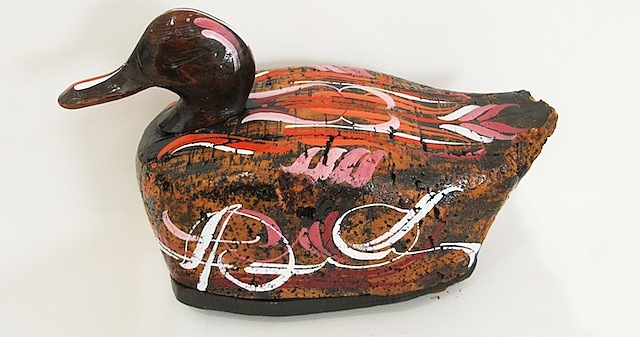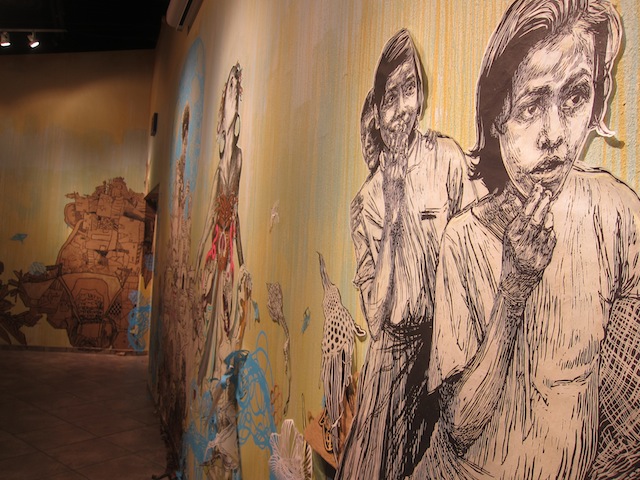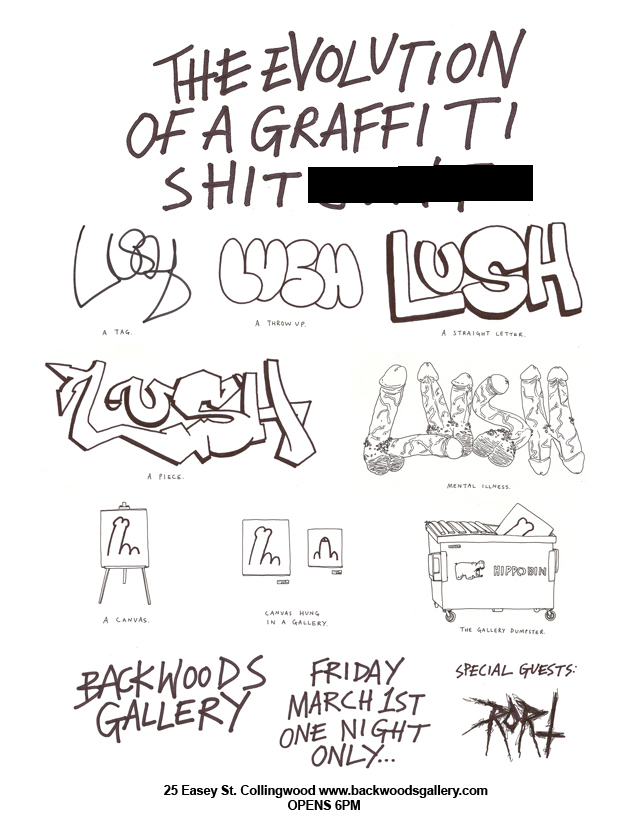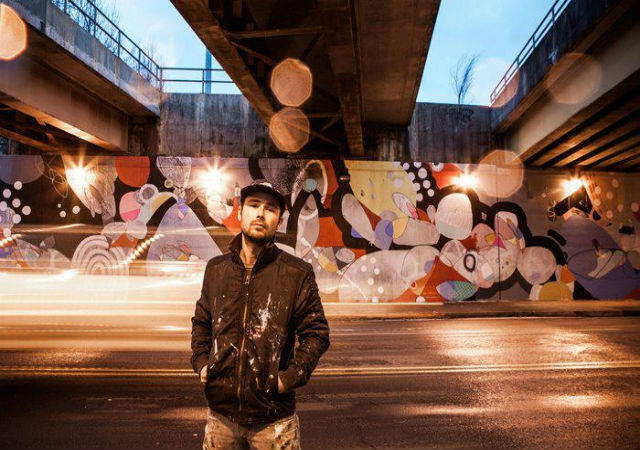
Hense has been committed to growing as an artist for nearly two decades now. The Atlanta native sticks to his guns by constantly showing support and advocating for the art scene in Atlanta. He’s done murals for the Atlanta Contemporary Art Center, the Museum of Design Atlanta, and recently transformed a historic church in Washington DC into a colorful, multi-surfaced piece of public art. Hense has exhibited his work nationally and internationally in solo and group shows, and has a long list of public art projects, commissions and collections. His abstract paintings and murals can blend precise line work with bright colors, shapes, and gestures.
Nico Glaude: Let’s kick things off with the church you painted in Washington. First of all, congrats on the massive amounts of attention that the project got on blogs and art sites, well deserved. If you can just talk about how that project came to being and your overall experience painting such a historic piece of architecture?
Hense: The project in Washington DC was probably the most interesting structure I’ve ever painted. I worked with a small crew to complete it. The project was a private commission which was located in SW Washington DC across the street from the Rubell’s proposed Contemporary Art Museum. The area in DC is a part of town that has huge potential to be the next art district and this project is the first step in bringing some life and color into the area. Taking an existing object like the church and painting the entire thing recontextualizes it and makes it a sculptural object. We really wanted to turn the church into a three-dimensional piece of artwork. With projects like this one, we really try to use the existing architecture as inspiration for the direction of the painting. I did several concept drawings for the church to present to the owner as rough ideas of aesthetic direction. I knew that visually, I wanted it to be drastically different from what it looked like before painting it. I also wanted to use very bright and bold colors to catch a viewers attention from far away. Most of my works are done in layers. The first step was to just get paint and color on every side and surface of the building. We then started developing large shapes and marks that would takes days to paint. The entire process took several weeks of layering and working. I’m very happy with the outcome of this project. I really enjoyed working on such interesting architecture. I also love working large and with multiple surface changes. When I’m working in my studio I usually am starting with a blank piece of paper, canvas or wood, and with projects like these I’m starting with an already beautiful piece of architecture to add color to.
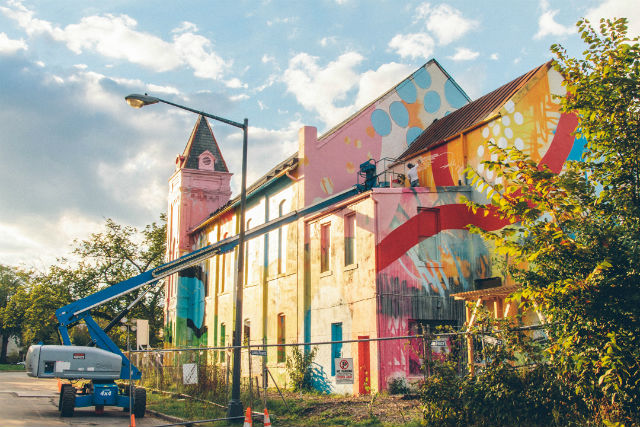
NG: Moving on to another mural you made for the Atlanta Contemporary Art Center. This mural is a complete departure from your most recent work; it’s a call back to letterform, minimalistic, comprised of only two colors and we get to see your name painted across a building. What was the inspiration behind the piece and why such a drastic change in style compared to previous murals?
Hense: I actually had another piece on the Center prior to this one and felt like it was time for an update. We were working on another exterior project right down the street for the Westside Cultural Arts Center which was very colourful and decided to do something totally opposite of that. I enjoyed taking it back to the pure essence of getting up. Silver and black, drippy block letters.
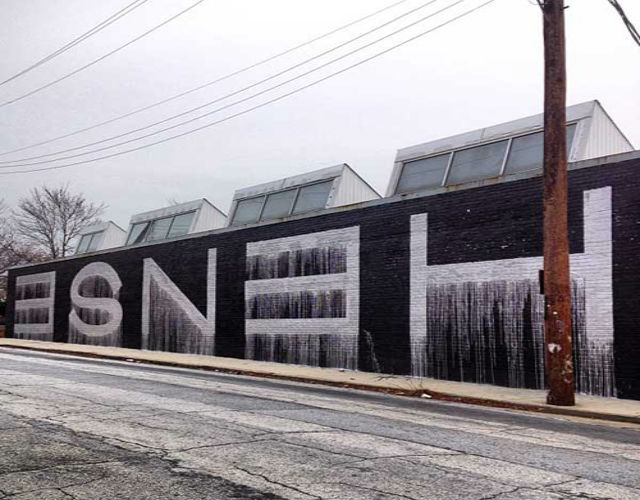
NG: Your murals always tend to be vast in terms of scale, and covered with a wide range of colors and shapes. What’s approach to doing a mural?
Hense: It really depends on the project. Right now I’m very influenced by interesting architecture. That could mean historic or contemporary. I enjoy working on flat surfaces of course, but a structure that has multiple planes and angles is much more dynamic visually before any paint is applied. It’s like having a blank canvas that is already layered and ready to go. Depending on the scale, I may have assistants work with me on projects.
Almost everything I work on is completely spontaneous and I rarely use a preconceived sketch or concept. I’ve been recently experimenting in treating my exterior works similarly to my paintings. Color is another important aspect of my work. I like to use bold, bright colors that make a statement and really pop.
The work is purely based on abstraction and the physical process of painting. I want to constantly push myself and the viewer as to what can be defined as a painting. I enjoy the experimental process of painting in my studio or outdoors and I never want to know ahead of time what the final outcome of the piece will be. For me, the exciting part of the creative process is the unknown and the experimenting that takes place to get from one stage to the other.
I worked large early on with my letter-based graffiti, so painting entire buildings was a natural progression. I used to write my name in big block letters 100 feet long and 50 feet high using silver and black oil-based paint. I think that has helped me understand how to execute large exterior works which can also have multiple surface changes. Working large for me is the best. As much as I enjoy painting in my studio, I can easily say that working on large exterior projects has been the most exciting. One of the major challenges of working on that scale is the material application to the surface. We need lots of tools and lots of paint. The marks and shapes need to be larger than most studio tools can make which means we have to invent new tools or methods for the particular project.
NG: The great debate of graffiti writers moving into gallery settings will always be contested, but it’s something that’s becoming the norm of late. How was your transition from the streets to the gallery and any advice for artists trying to make that same switch?
Hense: I would say to do what feels right, go your own route and be original.
NG: You’ve traveled a lot in the past because of your work. What is it that draws you to, and keeps you in Atlanta?
Hense: I enjoy Atlanta for many reasons. I think I’ve kept Atlanta as my home base because it allows me to grow as an artist and lets me hold down an affordable, nice studio.
I’m able to travel for projects whenever I need to and the City still has a great sense of originality and culture.
NG: So there’s the story of you getting booked bare foot while on the run from the cops, any other interesting stories that have happened to you whilst getting up?
Hense: That story your referring to is probably the most ridiculous of them. I’ve had my share of chases, bookings and incidents.
NG: What’s your favourite kind of spray paint to use?
Hense: I like them all.
NG: Do you have an all time favourite mural you’ve made?
Hense:
700 Delaware
2012
Washington DC
House paint and aerosol
NG: Toss up between a blank canvas and a blank wall, which would you pick?
Hense: Blank wall.
Photos courtesy of Hense

